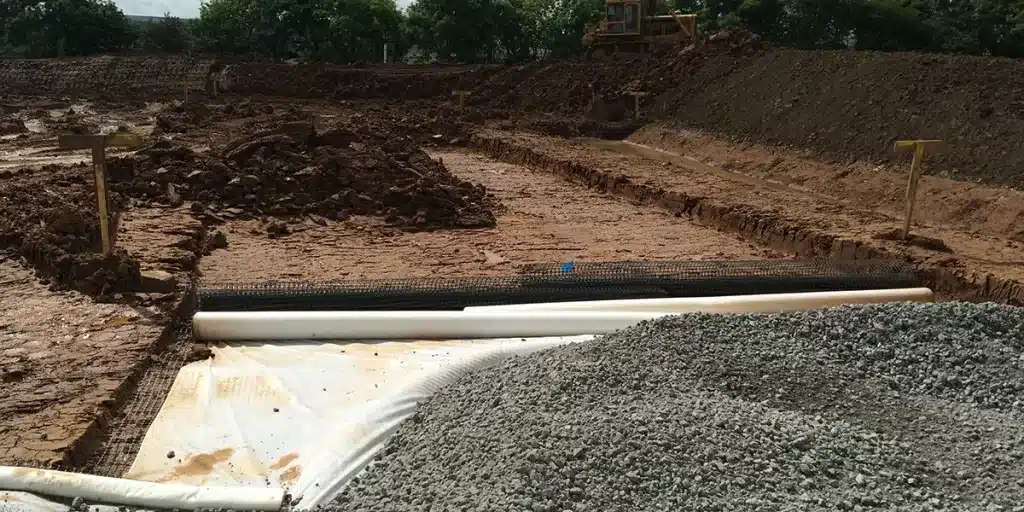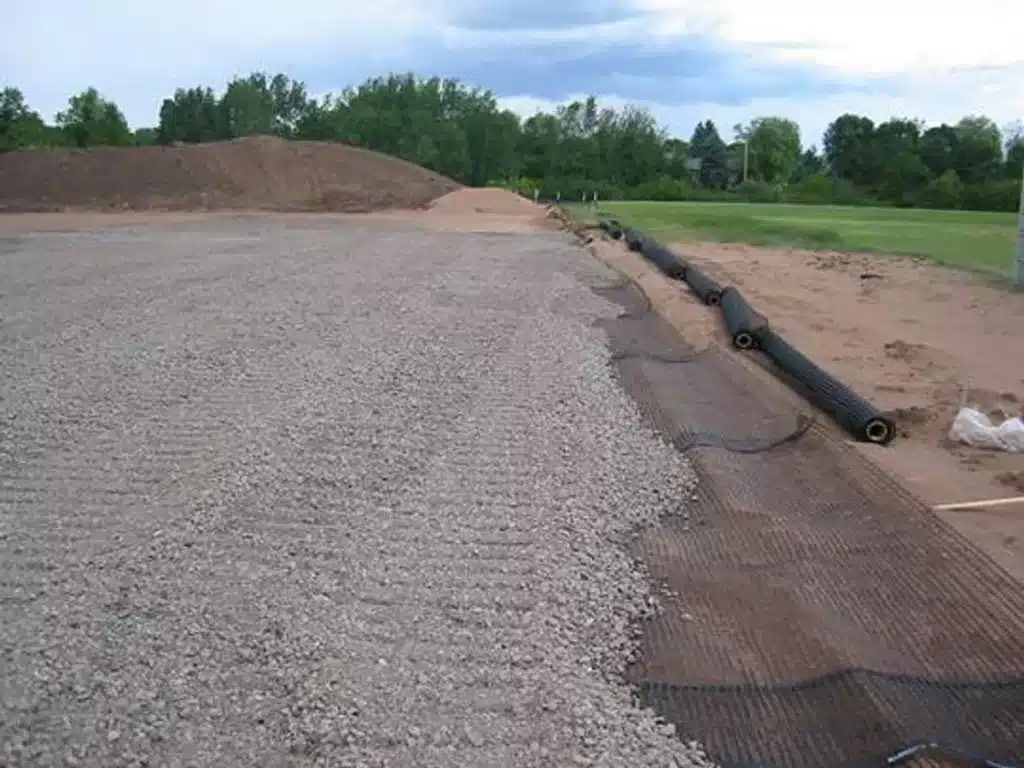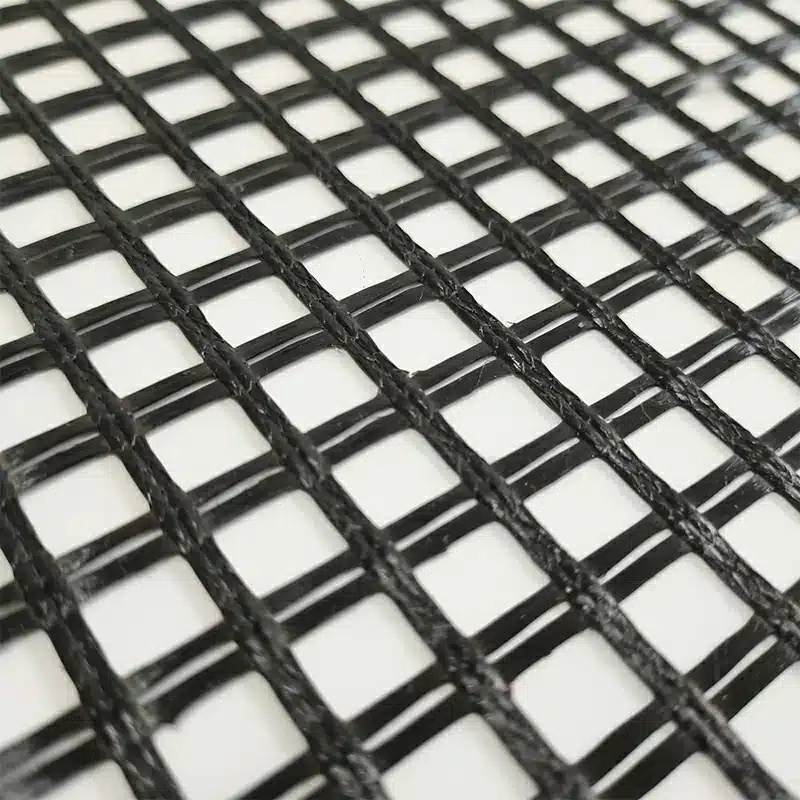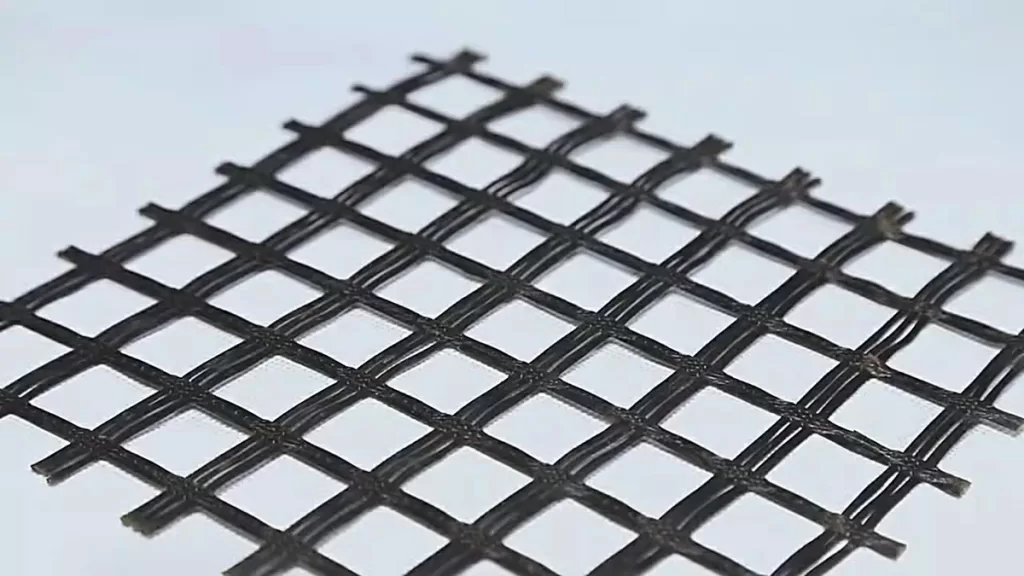+86-159 9860 6917
info@geofantex.com
geofantex@gmail.com
+86-400-8266163-44899
In this article, we explore what polyester geogrid is, its uses, the different types available, and the materials used in its production. Polyester geogrid is a crucial component in civil engineering and construction projects, providing strength and stability to various structures.

What is polyester geogrid?
Polyester geogrid is an outstanding geosynthetic crafted from high-strength polyester yarns. These yarns are woven together to form a grid-like structure, available in both uniaxial and biaxial configurations. Known for their remarkable tensile strength and durability against environmental conditions, polyester geogrids provide excellent reinforcement and stability, making them a must-have in diverse civil engineering projects.
What is the use of polyester geogrid?
Polyester geogrid is incredibly versatile in civil engineering and construction, primarily enhancing soil stability and reducing erosion. Its applications include:
- Road Construction: Strengthening roads and pavements, reducing rutting and cracking from traffic loads.
- Retaining Walls: Providing support to retaining walls against soil and water pressure.
- Slope Stabilization: Preventing erosion and landslides, boosting overall safety in hilly or sloped areas.
- Embankment Construction: Reinforcing embankments to handle heavy loads without deformation.
- Landfills: Ensuring stable base reinforcement in landfill cells, preventing soil and waste material mixing.
What are the three types of geogrid?
Geogrids come in three main types, each with specific characteristics and applications:
- Uniaxial Geogrid: This type offers strength and reinforcement in one primary direction, making it perfect for applications where support is primarily needed in a single direction, like road construction or retaining walls.
- Biaxial Geogrid: Biaxial geogrids provide equal strength and reinforcement in both directions, making them ideal for projects where forces act in multiple directions, such as pavement construction and slope stabilization.
- Triaxial Geogrid: Triaxial geogrids are designed to offer strength and reinforcement in multiple directions, enabling them to handle complex stress patterns. They are commonly used in projects with irregular or varying loads, like railway embankments and mining applications.

What material is Geogrid made of?
Geogrids are mostly crafted from polymers, including polyester, polyvinyl alcohol, polyethylene, or polypropylene. These polymers are chosen for their toughness, resilience to environmental factors, and strong tensile properties. The material selection depends on the project’s unique needs and the environmental conditions the geogrid will encounter.
Polyester geogrid is a versatile and essential component in the field of civil engineering and construction. Its ability to provide reinforcement and stability in various applications makes it a valuable asset for engineers and builders. Understanding the types of geogrid and the materials used in their production can help professionals make informed choices, ensuring the success of their projects and the safety of structures. Whether you’re constructing roads, retaining walls, or embankments, polyester geogrid plays a pivotal role in enhancing the longevity and reliability of these structures.



Get Free Sample
We’ll respond as soon as possible(within 12 hours)






















